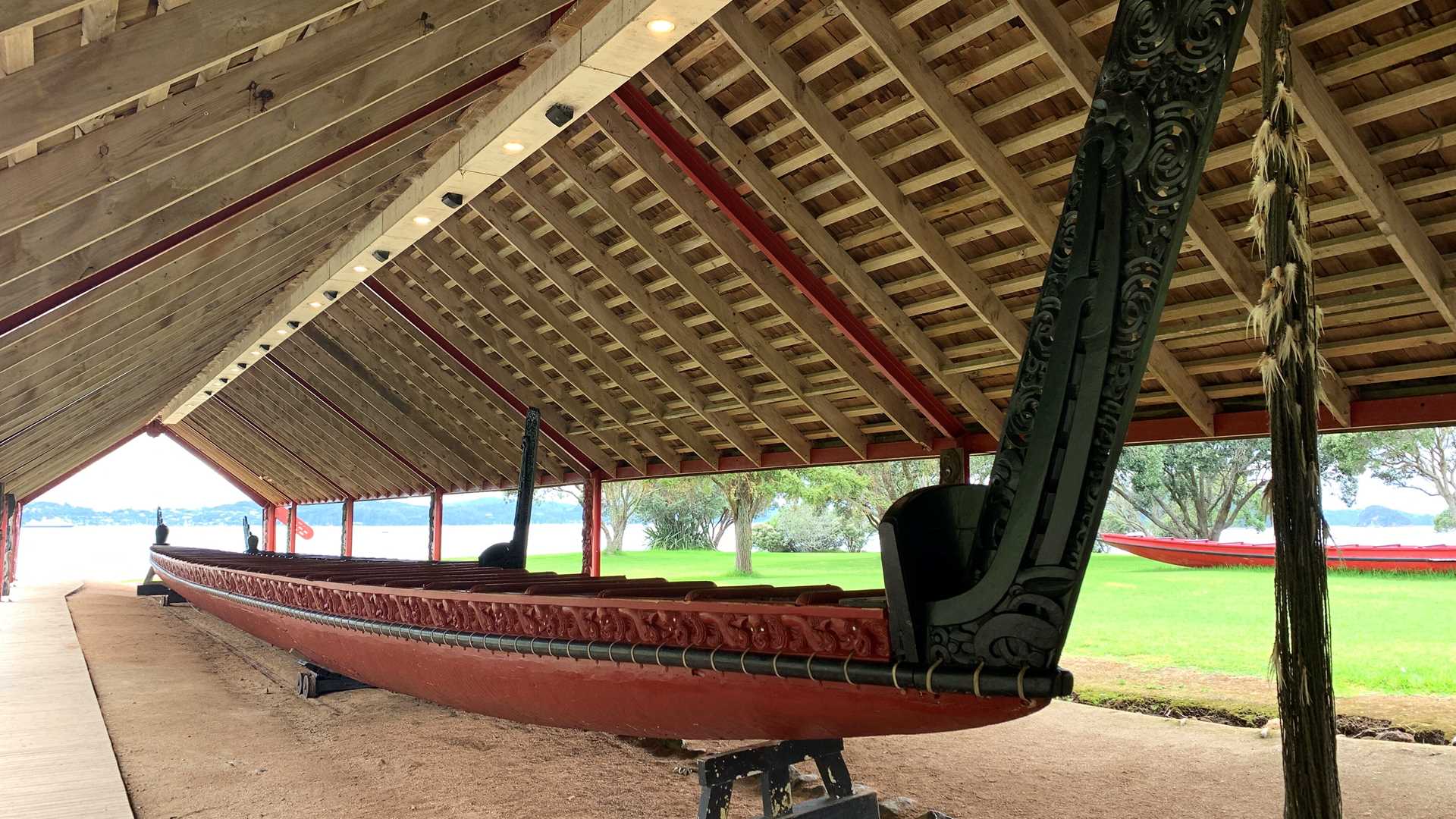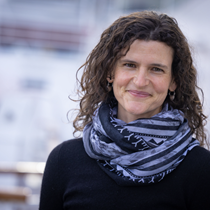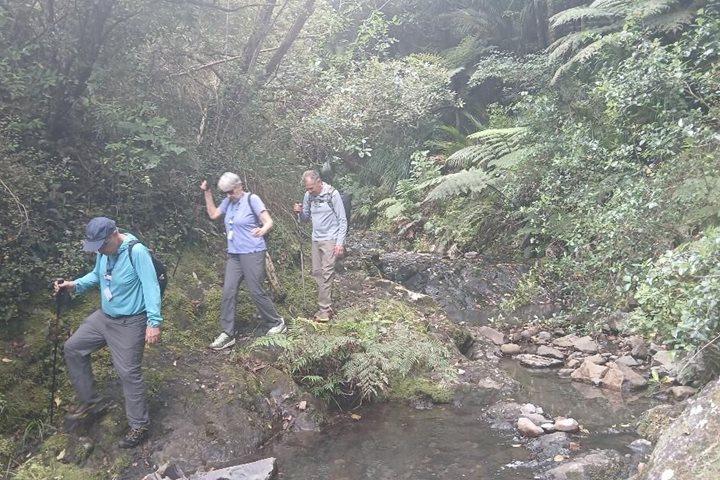On February 6th, 1840, a treaty was signed between British and Māori leaders here at the Waitangi Treaty Grounds. This document would come to define many aspects of the relationship between Māori and British people up to the present day.
This important cultural and historic site holds many stories and offers an unparalleled learning opportunity for all of us, as well as a way to contextualize the voyage we have been on together.
We started by visiting Ngātokimatawhaorua, the largest Māori war canoe in existence. It was built from kauri trees and first launched in 1940 to commemorate the 100th anniversary of the treaty. It is a powerful symbol of Māori unity, and it reflects the history of Kupe. The first Polynesian to land in Aotearoa, Kupe arrived in a voyaging canoe called Matawhaorua.
From there, we walked the same trail the leaders walked on the day they signed the treaty in 1840. We saw the Treaty House, which was home to a British representative sent by the King of England in the 1800s.
A highlight of the day was the Māori cultural performance that took place inside the intricately carved and peaceful whare. Expedition leader Andrew Peacock gave a short speech in response to our Māori hosts as part of the protocol for entering and attending the event. After that, we enjoyed a sampling of dance, song, and cultural interpretation that left us with a deeper understanding of these Māori houses and their significance.
In contrast to the morning, we then visited the town of Russell. The site was taken over by British colonizers and became a hub for whaling, trading, and general debauchery. Today it is a tidy tourist town, and our guides pointed out the highlights – including church pew cushions depicting intricate scenes of local wildlife and maritime living.
We head to Auckland now after a very full final day of this voyage.







